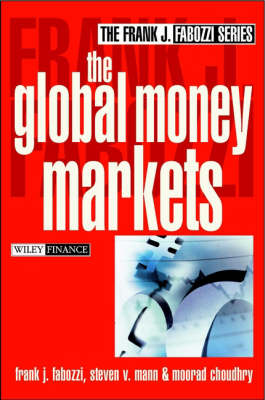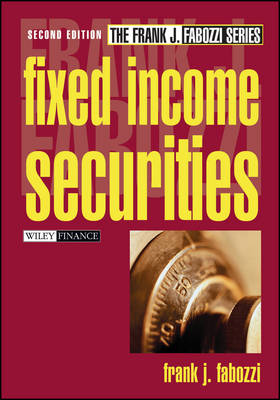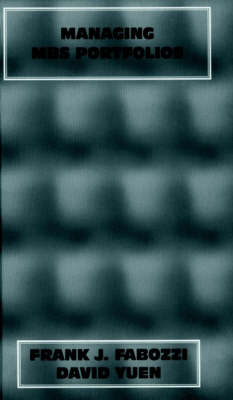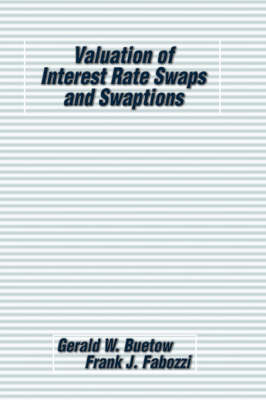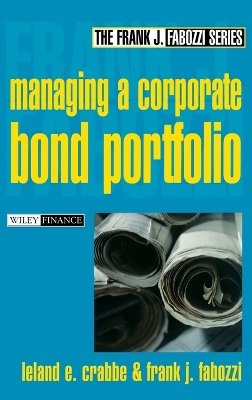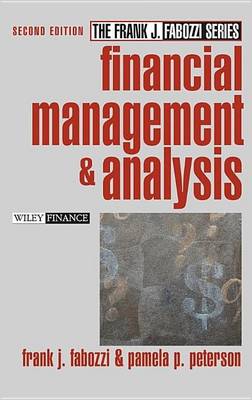Frank J. Fabozzi
52 primary works • 62 total works
Book 4
The Global Money Markets
by Frank J. Fabozzi, Steven V. Mann, and Moorad Choudhry
The Global Money Markets is the authoritative source on short–term investing and borrowing–from instruments in the U.S. and U.K., to asset–liability management. It also clearly demonstrates the various conventions used for money market calculations and discusses other short–term structured financial products such as asset–backed securities and mortgage–backed securities.
Steven V. Mann (Columbia, SC) is Professor of Finance at the Moore School of Business, University of South Carolina. He has coauthored two previous books and numerous articles in the area of investments and works as a consultant to investment/commercial banks throughout the United States. Moorad Choudhry (Surrey, UK) is a Vice President of structured finance services with JPMorganChase in London. Prior to that he worked as a gilt–edged market maker and Treasury trader at ABN Amro Hoare Govett Sterling Bonds Limited, and as a sterling proprietary trader at Hambros Bank Limited. Moorad is a Senior Fellow at the Centre for Mathematical Trading and Finance, City University Business School.
John Wiley & Sons, Inc. is proud to be the publisher of the esteemed Frank J. Fabozzi Series. Comprising nearly 100 titles–which include numerous bestsellers The Frank J. Fabozzi Series is a key resource for finance professionals and academics, strategists and students, and investors. The series is overseen by its eponymous editor, whose expert instruction and presentation of new ideas have been at the forefront of financial publishing for over twenty years. His successful career has provided him with the knowledge, insight, and advice that has led to this comprehensive series.
Frank J. Fabozzi, PhD, CFA, CPA, is Editor of the Journal of Portfolio Management, which is read by thousands of institutional investors, as well as editor or author of over 100 books on finance for the professional and academic markets. Currently, Dr. Fabozzi is an adjunct Professor of Finance at Yale University′s School of Management and on the board of directors of the Guardian Life family of funds and the Black Rock complex of funds.
Book 8
Fixed Income Securities, Second Edition sets the standard for a concise, complete explanation of the dynamics and opportunities inherent in today's fixed income marketplace. Frank Fabozzi combines all the various aspects of the fixed income market, including valuation, the interest rates of risk measurement, portfolio factors, and qualities of individual sectors, into an all-inclusive text with one cohesive voice.
This comprehensive guide provides complete coverage of the wide range of fixed income securities, including:
* U.S. Treasury securities
* Agencies
* Municipal securities
* Asset-backed securities
* Corporate and international bonds
* Mortgage-backed securities, including CMOs
* Collateralized debt obligations (CDOs)
For the financial professional who needs to understand the fundamental and unique characteristics of fixed income securities, Fixed Income Securities, Second Edition offers the most up-to-date facts and formulas needed to navigate today's fast-changing financial markets. Increase your knowledge of this market and enhance your financial performance over the long-term with Fixed Income Securities, Second Edition.
www.wileyfinance.com
Book 14
Book 22
Book 34
Book 49
Book 55
Derivatives and Equity Portfolio Management
by Bruce M. Collins and Frank J. Fabozzi
Book 56
Credit Derivatives
by Mark J. P. Anson, Frank J. Fabozzi, and Moorad Choudhry
Book 59
Book 60
Book 63
Book 66
Mean-variance Analysis in Portfolio Choice and Capital Markets
by Harry M Markowitz
Book 73
Book 80
Valuation of Interest Rate Swaps and Swaptions
by Gerald W. Buetow and Frank J. Fabozzi
Book 83
Introduction to Fixed Income Analytics
by Steven V. Mann and Frank J Fabozzi, Cfa
Book 85
Book 104
Measuring and Controlling Interest Rate and Credit Risk
by Frank J. Fabozzi, Steven V. Mann, and Moorad Choudhry
Measuring and Controlling Interest Rate and Credit Risk is a systematic evaluation of how to measure and control the interest rate risk and credit risk of a bond portfolio or trading position, defining key points in the process of risk management as related to financial situations. The authors construct a verbal flow chart, defining and illustrating interest rate risk and credit risk in regards to valuation, probability distributions, forecasting yield volatility, correlation and regression analyses. Hedging instruments discussed include futures contracts, interest rate swaps, exchange traded options, OTC options, and credit derivatives. The text includes calculated examples and readers will learn how to measure and control the interest rate risk and credit risk of a bond portfolio or trading position. They will discover value at risk approaches, valuation, probability distributions, yield volatility, futures, interest rate swaps, exchange traded funds; and find in-depth, up-to-date information on measuring interest rate with derivatives, quantifying the results of positions, and hedging.
Frank J. Fabozzi (New Hope, PA) is a financial consultant, the Editor of the Journal of Portfolio Management, and an Adjunct Professor of Finance at Yale University?s School of Management.
Steven V. Mann (Columbia, SC) is Professor of Finance at the Moore School of Business, University of South Carolina. Moorad Choudhry (Surrey, UK) is a Vice President with JPMorgan Chase structured finance services in London.
Moorad Choudhry (Surrey, England) is a senior Fellow at the Centre for Mathematical Trading and Finance, CASS Business School, London, and is Editor of the Journal of Bond Trading and Management. He has authored a number of books on fixed income analysis and the capital markets. Moorad began his City career with ABN Amro Hoare Govett Sterling Bonds Limited, where he worked as a gilt-edged market maker, and Hambros Bank Limited where he was a sterling proprietary trader. He is currently a vice-president in Structured Finance Services with JPMorgan Chase Bank in London.
Book 119
Managing a Corporate Bond Portfolio
by Leland E. Crabbe and Frank J. Fabozzi
"Crabbe and Fabozzi's Managing a Corporate Bond Portfolio is a refreshingly good book on the neglected topic in fixed income portfolio management. If you want to understand the latest thinking in corporate bonds, what drives prices and why, read this book. You will emerge with knowledge that will help you get an edge in the competitive investing arena."
-Tim Opler
Director, Financial Strategy Group, CSFB
"A practitioner's guide . . . a creative, comprehensive, and practical book that addresses the myriad of challenges facing managers of corporate bond portfolios. The chapter on liquidity, trading, and trading costs is a must read."
-Mary Rooney
Head of Credit Strategy, Merrill Lynch
"As a Senior Portfolio Manager responsible for managing billions of dollars invested in fixed income product during the mid-1990s, Lee Crabbe was the one Wall Street strategist that I would read every week to help me figure out where value was in the corporate bond market, and for insightful and easy-to-understand special reports that educated me and most investors on the risks and opportunities inherent in new structures and subordinated products. Fortunately for me and investors, Lee Crabbe and Frank Fabozzi have written this book, which compiles much of their previous work on corporate bond valuation, along with new features that are a must read, especially in light of the volatile times in the corporate bond market over the past few years. For portfolio managers, analysts, traders, and even strategists, if there is one book in your bookshelf that you should have on corporate bond portfolio management, it is this one."
-William H. Cunningham
Managing Director, Director of Credit Strategy, J.P. Morgan Securities Inc.
www.wileyfinance.com
Book 122
Broken down into four comprehensive sections, Capital Budgeting: Theory and Practice explores and illustrates all aspects of the capital budgeting decision process. Pamela Peterson and Frank Fabozzi examine the critical issues and limitations of capital budgeting techniques with an in-depth analysis of:
- Classifying capital budgeting proposals
- Determining the relevant cash flows for capital budgeting proposals
- Assessing the economic value of a capital budgeting proposal using different techniques
- Incorporating risk into the capital budgeting decision
- Evaluating whether to lease or borrow-to-buy
Capital Budgeting: Theory and Practice provides the knowledge, insight, and advice that will allow you to handle one of the most important aspects of your firm's financial management. Advanced enough for practitioners yet accessible enough for the novice, Capital Budgeting: Theory and Practice is your complete guide to understanding and benefiting from the essential techniques of capital budgeting.
Book 132
